

Damion Smy
GWM Cannon Alpha ute, Tank 300 HEV and Tank 500 recalled
23 Hours Ago
Updated with a bigger battery, more power, more EV driving range, and new tech – the Hyundai Ioniq 5 Epiq really is epic.
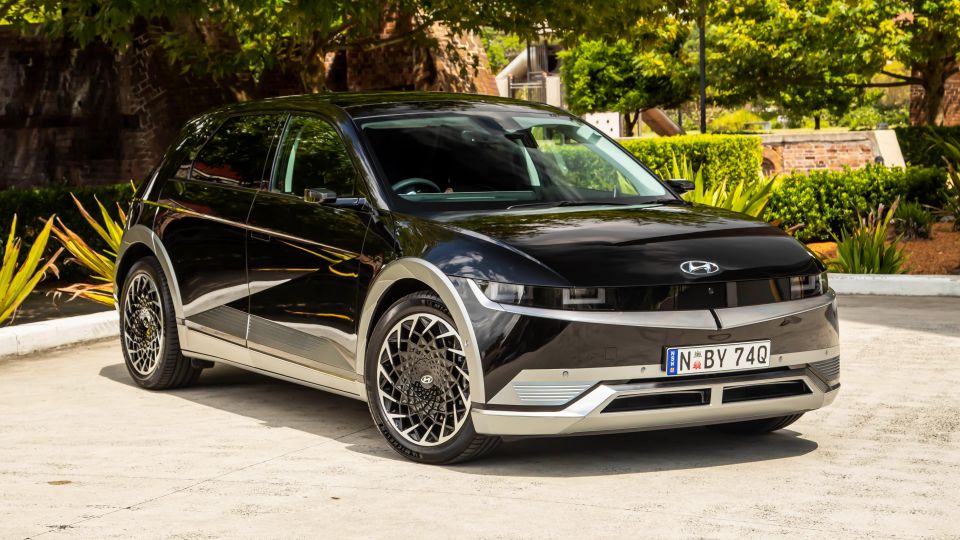
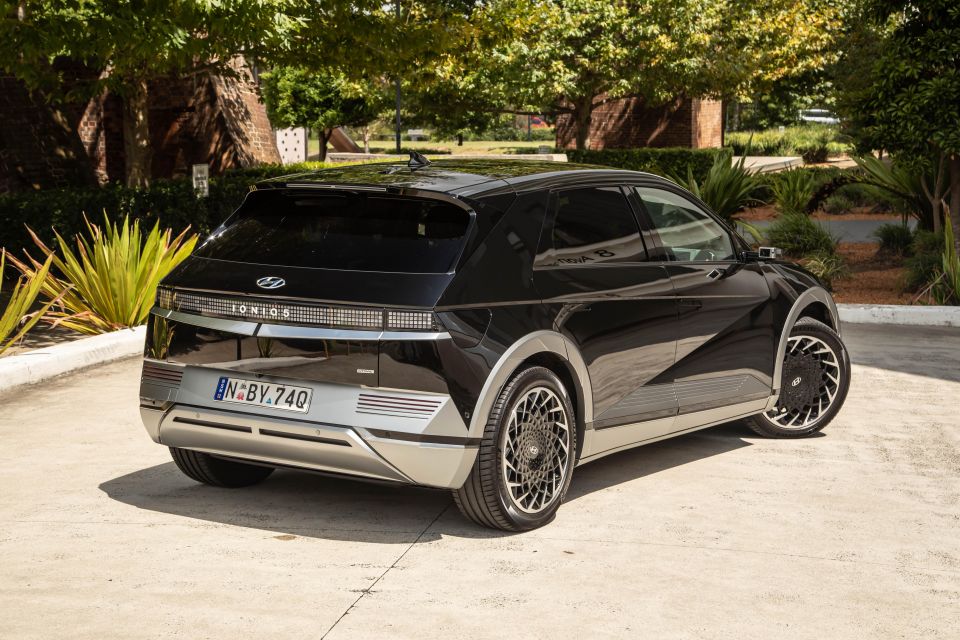

Quickly see how this car stacks up against its competition. Select any benchmark to see more details.
Where expert car reviews meet expert car buying – CarExpert gives you trusted advice, personalised service and real savings on your next new car.
The Hyundai Ioniq 5 may not look different for the 2023 model year, but the big electric hatchback (I don’t think of it as an SUV) has a bunch of really important changes under the stylish sheetmetal.

They include a bigger battery pack for all variants, more power and torque across the range, improvements to the technology on offer, a new chassis tune for improved driving characteristics, and connected services that’ll help you find fast charging more easily than before.
The line-up has been renamed too, with this one – the top-spec Epiq dual motor AWD model – costing more than any Ioniq 5 that has come before it.
There’s still the biggest issue with the Ioniq 5 – availability. Orders are strictly limited, and by the time you read this they will likely be fully exhausted for the first shipment of 250 examples. More will come later in the year (hopefully), but it is one of the reasons people just buy a Tesla – you order it online, and it arrives pretty soon after.
So is it worth the money, if you can manage to get your hands on one? Or are there smarter choices out there? Read on to find out.
The list price is $85,000 before on-road costs for this top-spec (for now) Ioniq 5 Epiq variant, which adds a number of items that haven’t been offered before on the range in Australia.
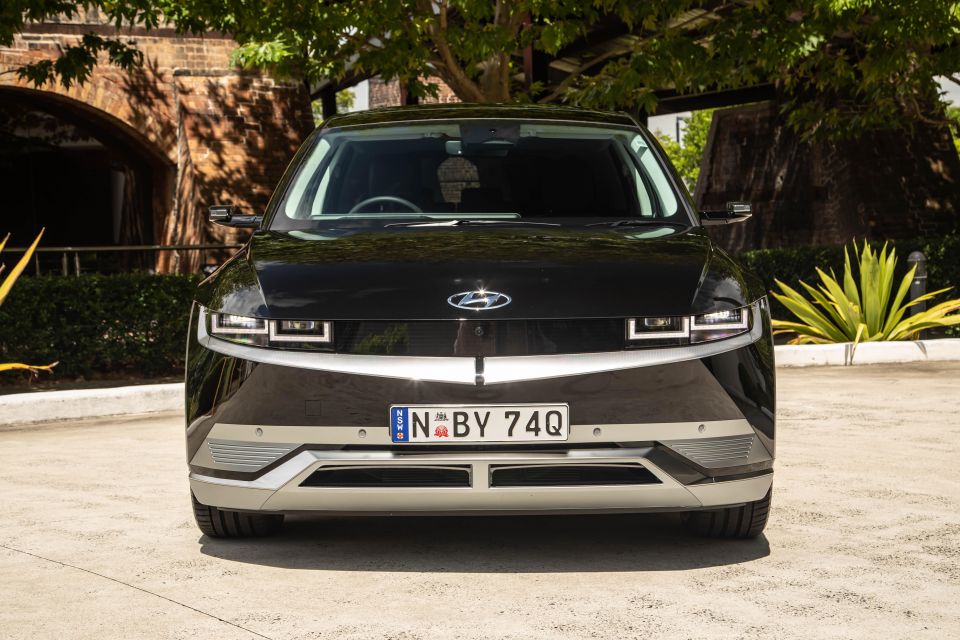
Here’s a rundown of the prices for the 2023 Hyundai Ioniq 5 EV range, including the new naming structure:
I’ll cover off what you get in this grade that makes it special below.
If you’re curious, the Abyss Black Mica paint finish seen in these images is a no-cost option, as is Phantom Black Mica, Lucid Blue Mica, Digital Teal Green Mica, Ecotronic Grey Mica, Galactic Grey Metallic and Atlas White Solid. The only paint option you’ll have to pay extra for is Gravity Gold Matte ($1000).
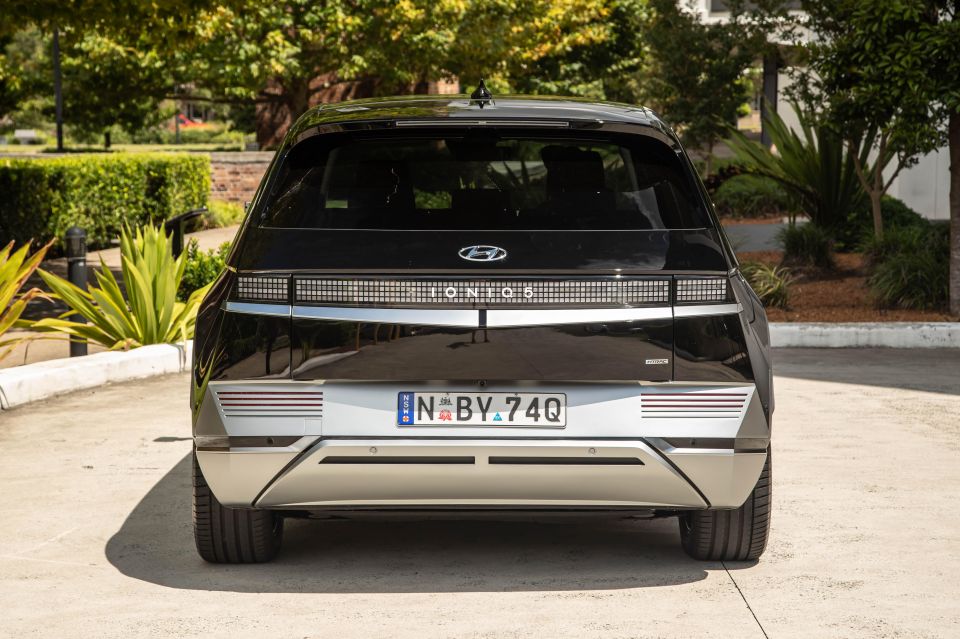
Okay, so where does this spec sit in the context of competitors? It’s in a strange spot, really. It’s not really equivalent to any spec of Tesla Model Y – the base model for it is $68,900 (MSRP) and the Performance AWD model is a fair bit more expensive, at $98,435 (MSRP).
There’s another obvious competitor in the Kia EV6. The most likely rival to this car is the EV6 GT-Line at $87,590. It’s very, very close on all the metrics, but doesn’t get digital mirrors like the Ioniq 5.
Buy your new car without the stress. It's fast, simple and completely free.

Great service from Travis and team, second time I have used this business would not hesitate to recommend them to anyone
Craig C.
Purchased a Ford Ranger in Sunshine Coast, QLD
CarExpert helped Craig save thousands on his Ford Ranger, now let us save you on your next new car.
Find a dealAside from the fitment of those screens for the side mirrors, the interior of the Ioniq 5 hasn’t really changed at all – and that’s not necessarily a bad thing.
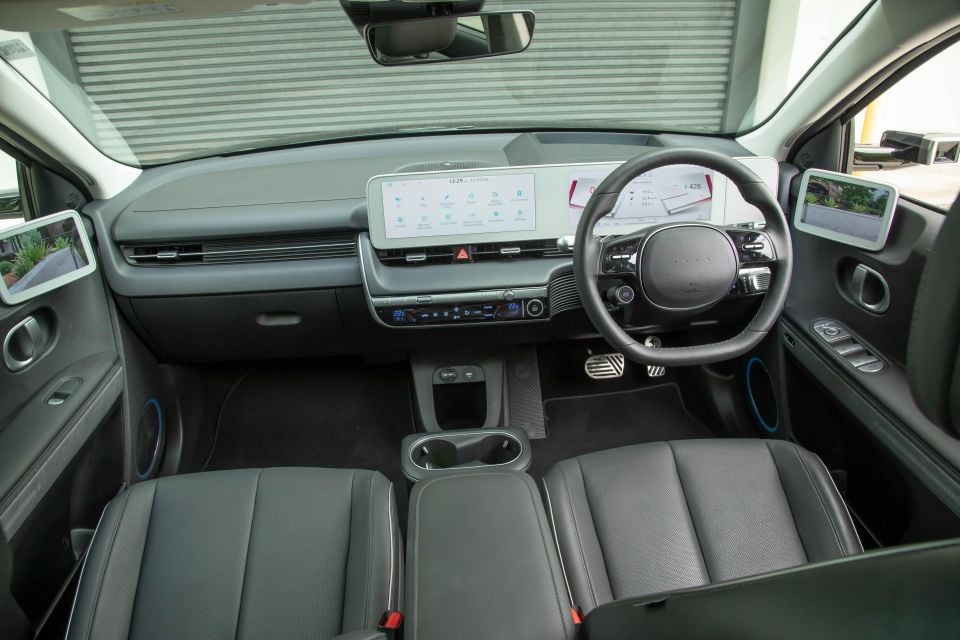
The cabin treatment is somewhere between eco-conscious and semi premium. It doesn’t necessarily feel like a luxury vehicle inside, but I do like some of the materials, including the marble-look trim decoration on the doors, and the material finish around the speaker section on the doors.
I’m not as hot on the soft plastic finish that runs the majority of the door panel above the armrest. It does look and feel a little bit cheap, especially because of the embossed stitching finish. I also don’t love the fact there aren’t proper grab handles on the doors, so you actually have to grab where your armrest is instead.
The steering wheel is pretty basic but thankfully easy to get to grips with, and the four squares that are the logo for the Ioniq brand now light up based on the charge status when recharging.
The gear selector stalk isn’t so easy to come to terms with. I really struggled to get my head around the fact you twist the controller backwards to go into reverse and forward to go into drive – that’s the exact opposite of what is natural for a traditional automatic vehicle. The stalk also can get in the way of your knees, if you’re a bit gangly.
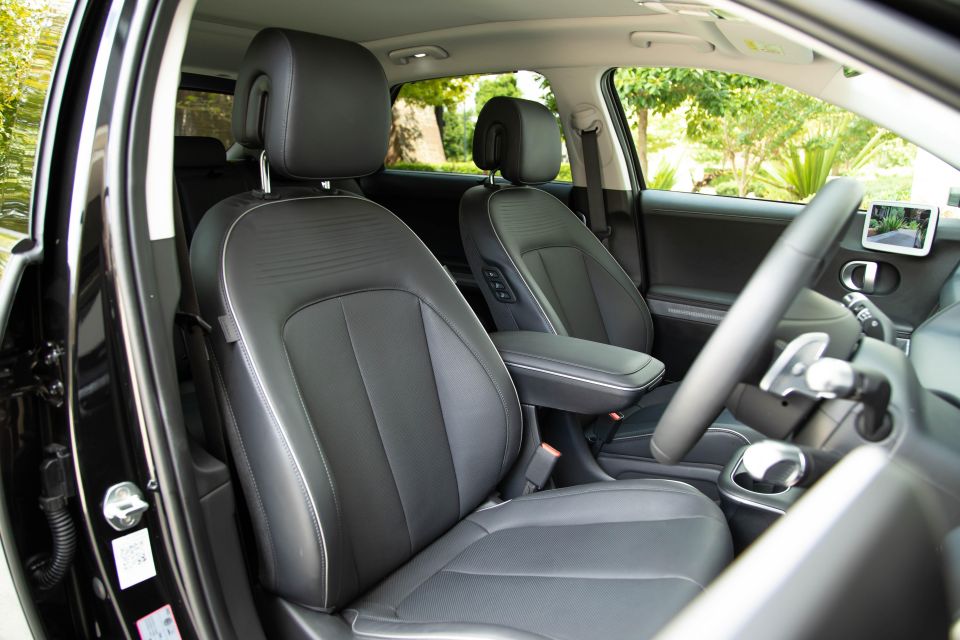
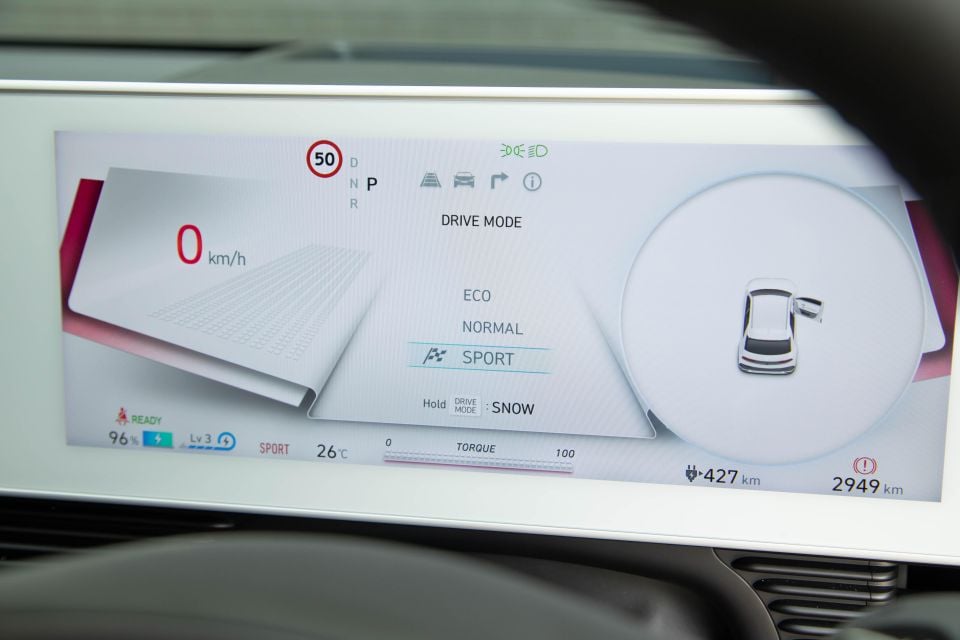
The information screen for the driver is very easy to get your head around, and I like that it has the blind-spot view camera that pops up when you indicate. Some people don’t rate that, but I think anything that is more in your line of sight is a good thing and as such, I appreciate the head-up display, too.
The media screen layout and usability are excellent – there are hard buttons below, which makes me happy.
The panel below incorporates a volume knob, tuning toggle, and touch-sensitive panel for air conditioning controls (not my favourite, but at least it’s better than having to adjust everything climate-wise through the screen). However, you do need to adjust things through the screen which should just be buttons, such as the memory seat settings and seat heating and cooling. Those things are done with buttons in other Hyundais.
The main screen is where you’ll find the majority of the information that you need, including things like sat nav, mapping, audio controls, and there’s also a Quiet Mode – so if you have kids in the back, you can limit the noise to just the front speakers.
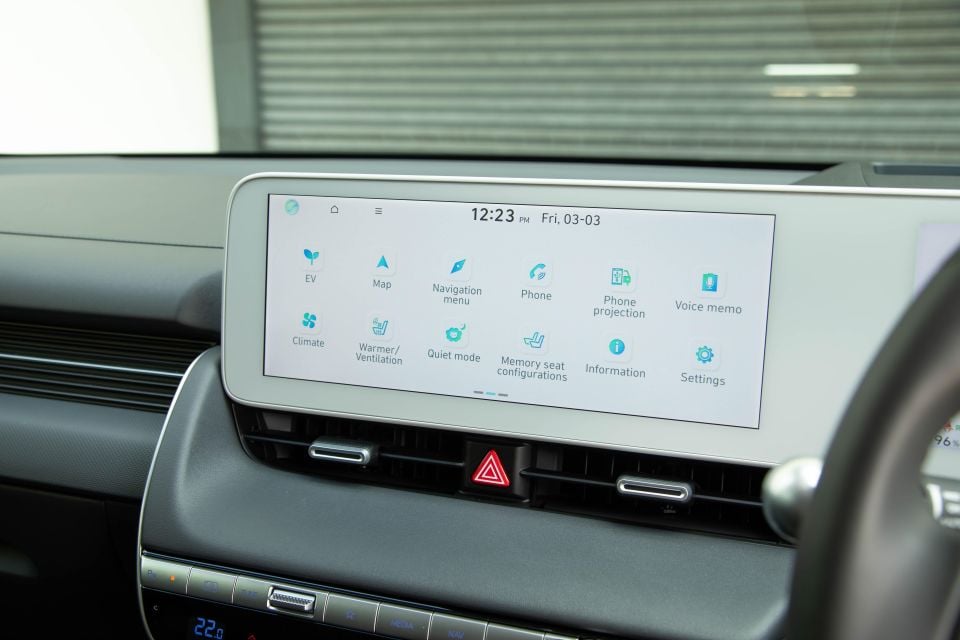
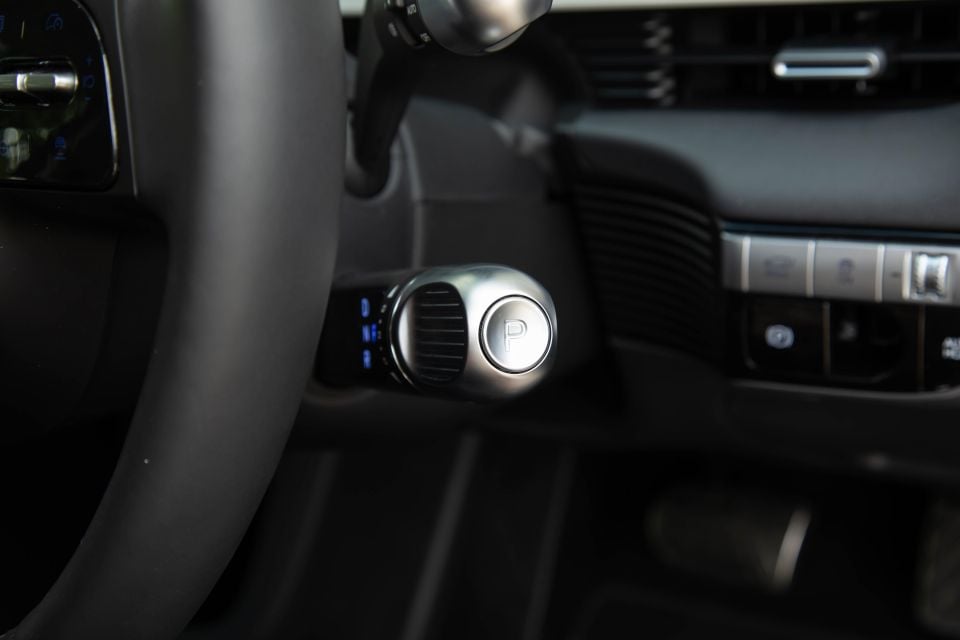
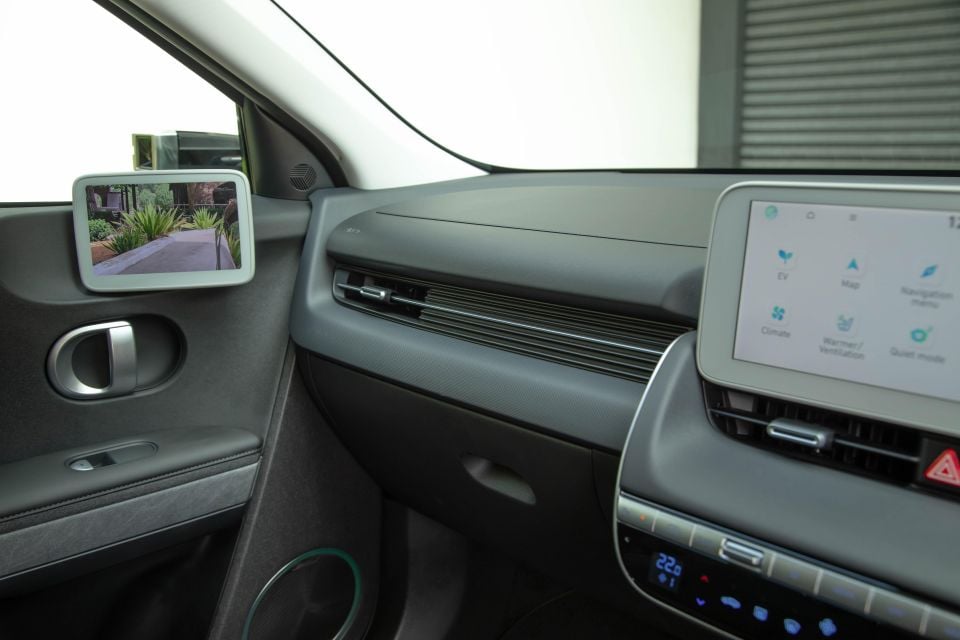
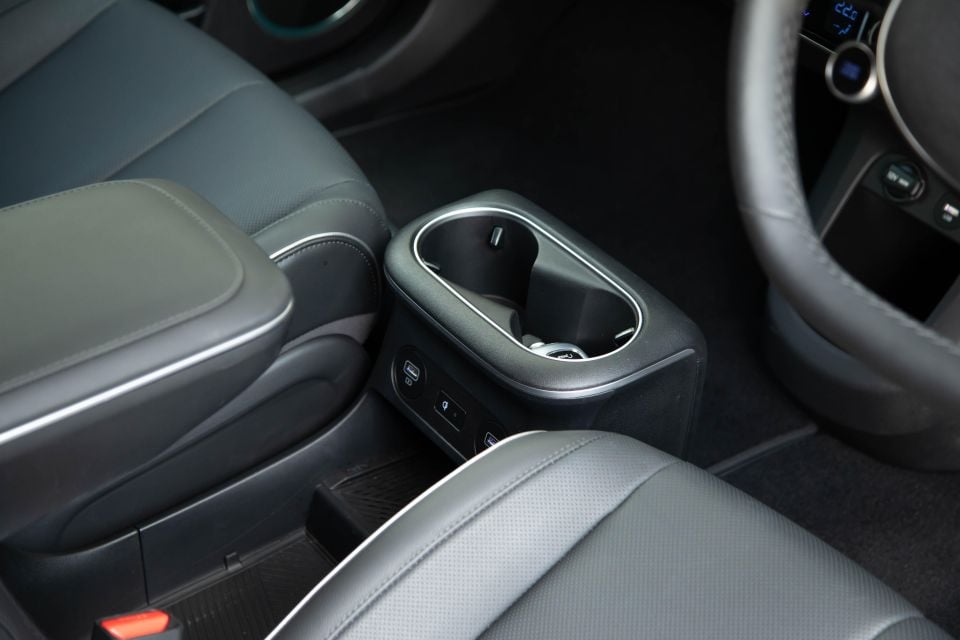
And of course there’s the usual smartphone integration with Apple CarPlay and Android Auto mirroring, but it has to be via a cable, not wirelessly.
Strangely, for a forward-thinking car like this, all the USB ports are still USB-A, not the more modern USB-C option. There are five of them to access, including one below the media screen (alongside a 12-volt and small storage area), plus four more in the centre console (two for front seat users, two for those in the back).
Storage in the front is excellent. There’s a massive open storage section between the front seats USBs and a wireless phone charger under the cup holders, plus a storage tray for a handbag or backpack, and then there’s another covered armrest as well. The front doors have bottle holders and a small storage sleeve as well.
One of the most ingenious pieces of interior design is the glovebox drawer. It’s a massive 9.4-litre storage caddy, that would easily be able to fit a small laptop, iPads or other valuables – and when you close it, the contents are completely out of sight.

The Epiq spec also has a massive panoramic sunroof with a proper fabric covering. The Model Y doesn’t come with a cover at all as standard, while others have mesh finish which isn’t as effective at blocking out the heat.
Seat comfort is good, and so is the adjustability. There’s also a series of buttons on the passenger’s front seat, including a single-touch recline button for that chair, and controls for the electronic sliding second-row seats.
Speaking of those seats, there’s ample space in the second row for someone my size (182cm/6’0”) with enough headroom, knee room and toe room to be comfortable. It’s also a wide bench seat, so you can fit three adults across, and there’s no transmission tunnel intrusion. The floor is flat, so there’s lots of space for feet.
I fit my 21-month-old daughter’s forward-facing baby seat in, and she had plenty of space. You should be able to fit a rearward-facing capsule with ample room for an adult in front, too.

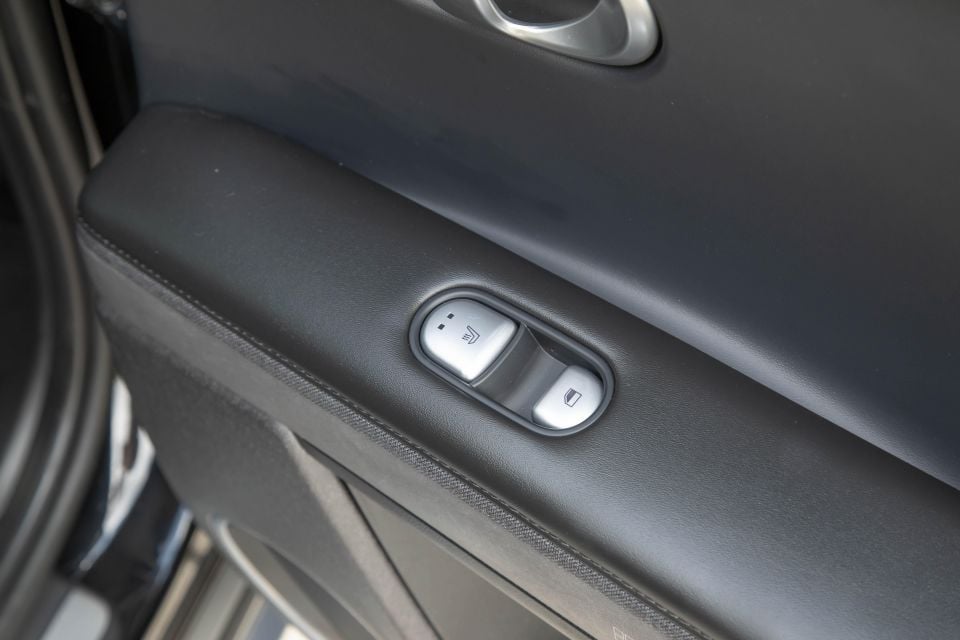
There are ISOFIX points on the window seats and three top-tether points as well. A nice touch for parents in the AWD models is the inclusion of the rear door window blinds, which block out a fair bit of light.
Storage in the back is pretty good with a pair of mesh map pockets and hard wearing kick plates on the backs of the front seats, bottle holders in the doors and a fold-down armrest with cupholders.
Below the back seat you’ll find a conventional household powerpoint for powering devices, while at the centre console area there are two USB ports.
The rear air vents aren’t in the traditional position; they’re instead located in the B pillars, and while that is a novel approach the airflow isn’t fantastic (it was 38° Celsius on one of the days I was testing his car, and it didn’t really cool down very much in the back of this black EV).

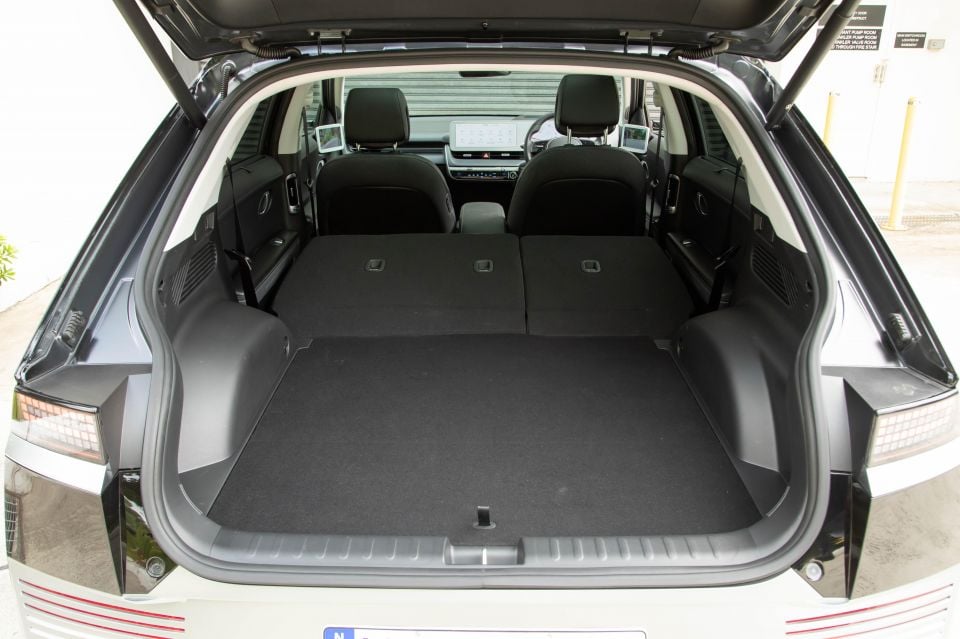
The boot is definitely big enough for a family of three for a weekend away, but it’s not what I’d call ‘enormous’. There’s 527L (VDA) of space, which sounds good but the shape of the cargo hold is a bit shallow.
Weirdly there are no remote releases for the rear seats in the boot area, which is a common fitment to most other cars. If you do schlep around to the rear seats and lower them using the levers at the base, you will see an open storage area of 1587L (VDA).
You don’t get a spare tire either, only a tyre mobility kit. That’s not uncommon for an EV, as spare wheels add lots of extra weight and take up precious battery/motor space. But it is something you might want to consider.
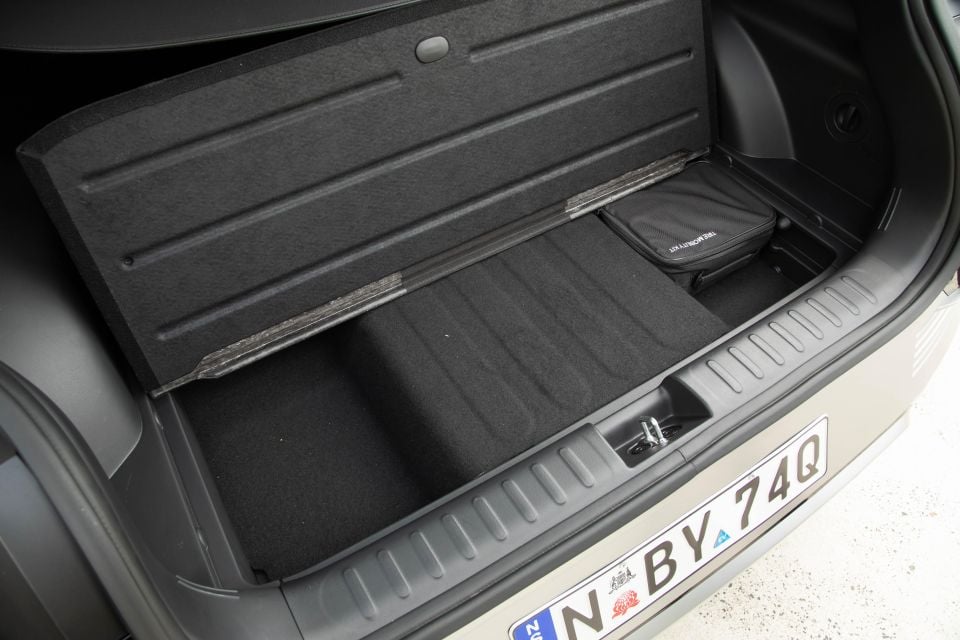
There is a little bit of extra storage under the boot floor, but not very much.
It has an electric boot, and it also has a proximity unlocking system which will open the boot for you if you stand close to the boot with the key fob. That proximity unlocking also works for the doors, which is a nice thing if you’ve often got your arms full (mums and dads, you know what I’m on about).
I’ve already referred to a power bump and changes under the skin, so let’s dive a little deeper.
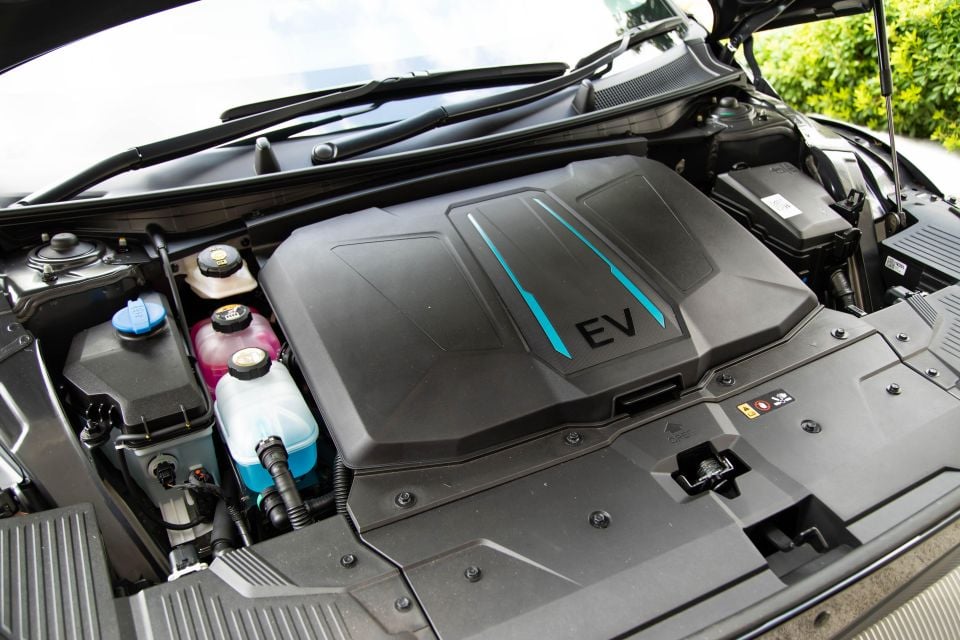
All Ioniq 5 models score a larger 77.4kWh liquid-cooled lithium-ion battery for 2023, which is in place of the smaller-capacity 72.6kWh unit in the previous models.
That in turn bumps the driving range in the rear-wheel drive Dynamiq from 481km to 507km (a great step over the psychological 500km barrier), while the all-wheel drive Techniq and Epiq models step up in range by 5.5 per cent, from 430km to 454km.
The electric motors in all grades have been powered up, as well. The RWD Dynamiq now offers up 168kW of power and 350Nm of torque (up 8kW).
Ioniq 5 Techniq and Epiq AWD now produce 239kW and 605Nm (up 14kW).
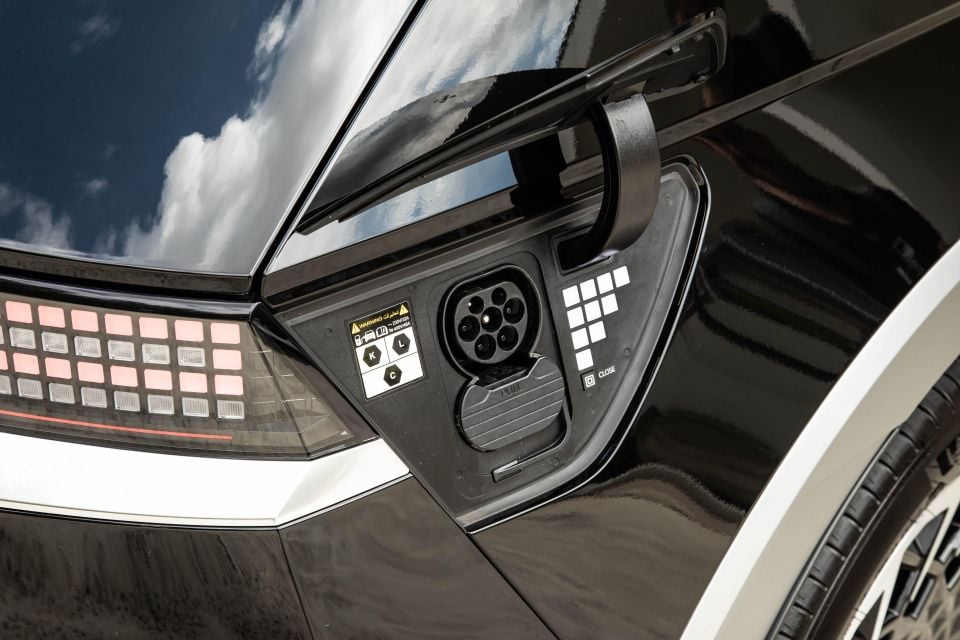
Choose the Epiq and you get a new battery conditioning system, which is claimed to improve driving and DC charging performance in colder climates. If, for example, you choose a DC charging station as your destination in the sat nav, the car will preheat the battery to ensure the quickest possible charge.
All Ioniq 5 models support a 400V and 800V charging infrastructure using a Type 2 plug. There’s also vehicle-to-load (V2L) capability, meaning you can run household electrical appliances (laptops, toasters, kettles, fridges, microwaves etc) from the car.
It can even output 250V, 3.6kW, at up to 15 amps. Included is a standard CCS Combo2 (IEC 62196-3 Configuration FF) 2-way adapter to domestic 3-pin plug output, as well as a three-pin powerpoint in the car below the rear seat.
If you find a 350kW ultra-fast charger, the Ioniq 5 is said to be able to charge from 10-80 per cent in just 18 minutes. A more common 50kW DC fast charger will take 73 minutes to fill the battery from 10-80 per cent.

Where expert car reviews meet expert car buying – CarExpert gives you trusted advice, personalised service and real savings on your next new car.
If you install a 7kW AC wall charger at home, you can expect it to take pretty much a whole night to get from 10 to 100 per cent (claim: 11 hours and 45 minutes). The maximum charge rate on AC is 10.5kW.
Now, the literal stuff you’ll find under the bonnet, includes a front storage area to stow your charging cables. The RWD model gets a bigger “froot” at 57 litres, while the AWD models have an additional motor up front, so their “froot” space is more limited, at 25L.
The updated Ioniq 5 scored a revised ride and handling tune, which the brand claims improves wheel control, bump absorption and body control. According to the press info, “the result is a vehicle that perfectly blends ride comfort with engaging dynamics, no matter the road or road surface”.
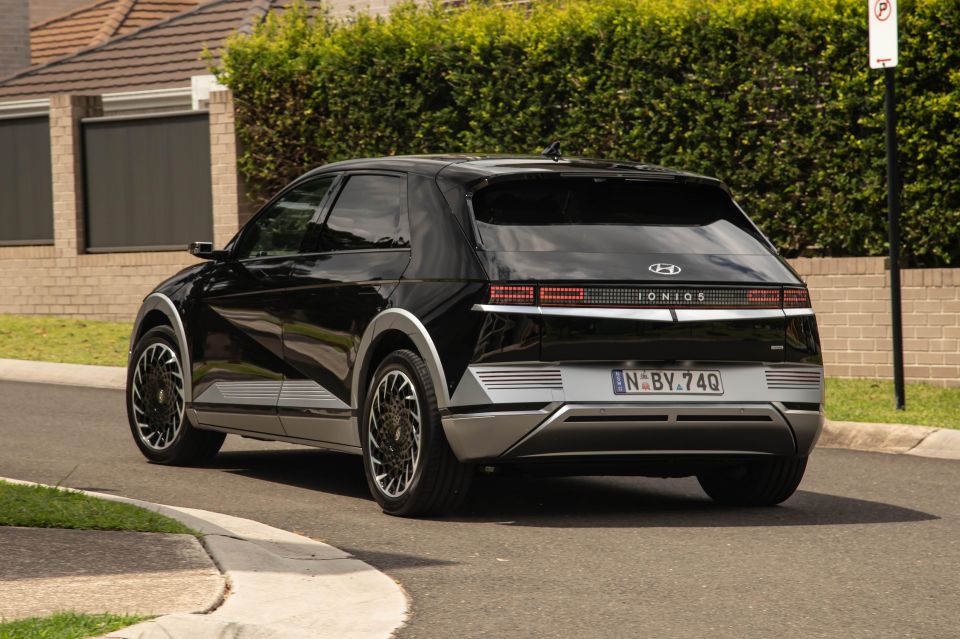
I have never worked in PR, but I would have probably found a word that isn’t “perfect”, because the tune here is not perfect.
It can still get a bit wobbly over large undulations as it did before (check out Paul’s video on the pre-update model – the sine wave bobble was pretty amazing), but it’s better than it was in that sort of situation. However, over broken road surfaces, the 20-inch wheels can still pick up plenty of the bad bits of the surface, and the body can feel like it’s wobbling on top of the chassis.
I don’t think that’s going to matter for most people. If you can spend this kind of money on an EV, you probably live somewhere that has reasonably well maintained roads. But if you do find a less than perfect surface, you’re going to feel it.
I reckon the balance of the ride firmness and body control is a bit better than it used to be, with a more sure-footed feeling than before. There’s not too much road noise to contend with, which is welcome in an otherwise-near-silent car.

The steering is pretty decent as well, offering a good level of accuracy and weighting.
But in some situations, in the Epiq at least, I found the parking situation to be more difficult than it ought to be. That’s because of the digital mirror system, which uses cameras to project a display onto twin interior screens, rather than just using… mirrors.
Obviously there are benefits – they are smaller, so you should see a little bit of an aero improvement, and they offer great “look at this!” chat factor.
But they make reverse parallel parking harder than it otherwise would be. You simply don’t have the same depth perception using these cameras/screens than you do with a regular old bit of glass.
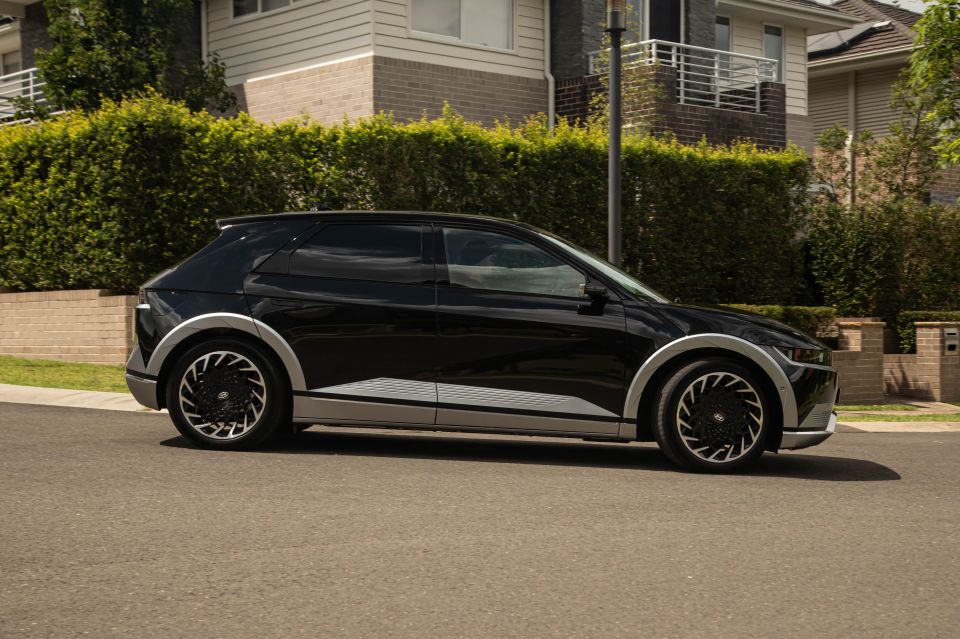
I’d actually opt not to go for the Epiq for that reason alone – the Techniq model below it has plenty of great standard features, and it scores regular mirrors.
Without driving the old and new versions back to back it’d be hard to tell the difference in terms of the additional power added, but it remains very quick to accelerate, like a lot of EVs. The fact you’ve got all the torque on offer effectively from a standstill means you can slingshot from a standstill to licence-losing pace in not very much time at all.
The official 0-100km/h time for this grade is 5.1 seconds, which is 0.1sec faster than before. That’s plenty quick, but if you want or need quicker, there’s an Ioniq 5 N model coming, which will drop that number to a more EV6 GT-like figure (it claims 3.5sec).
In order for you to see the value as you move up the range, I’ve listed the features you get, model by model, below, as well as the pricing, powertrain, and battery range per model:
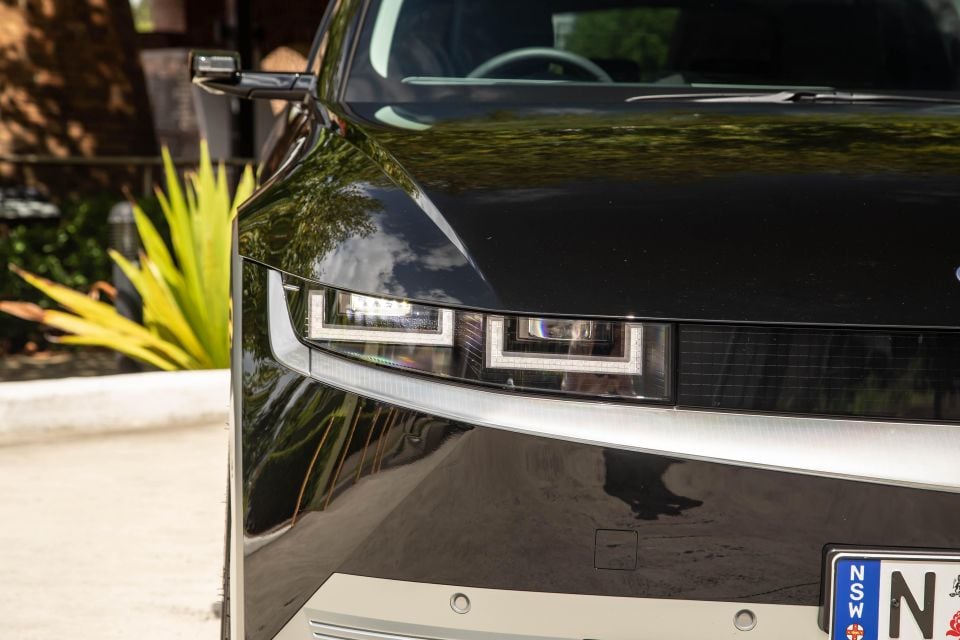

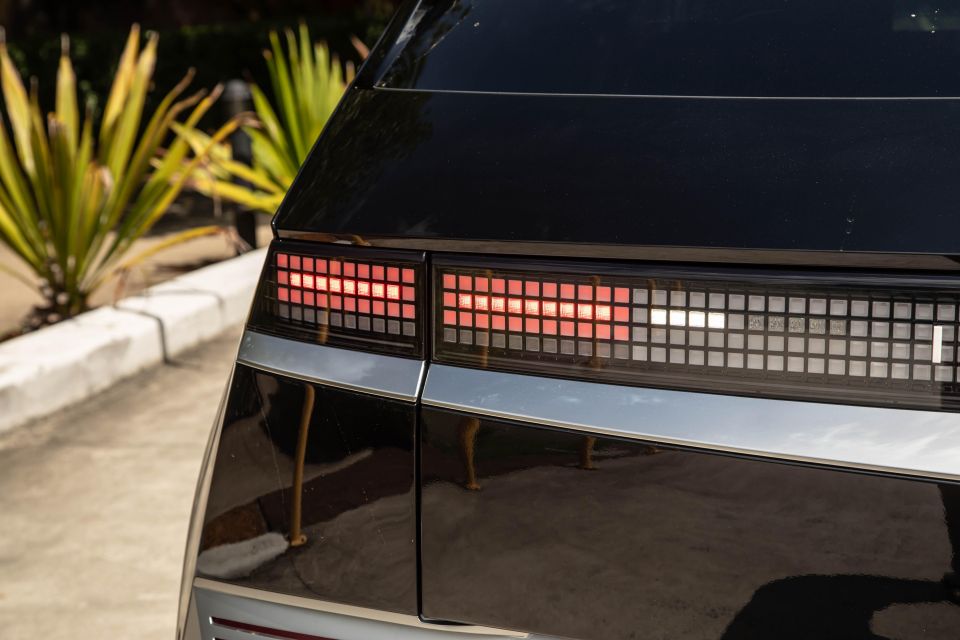

Standard equipment in theDynamiq includes:
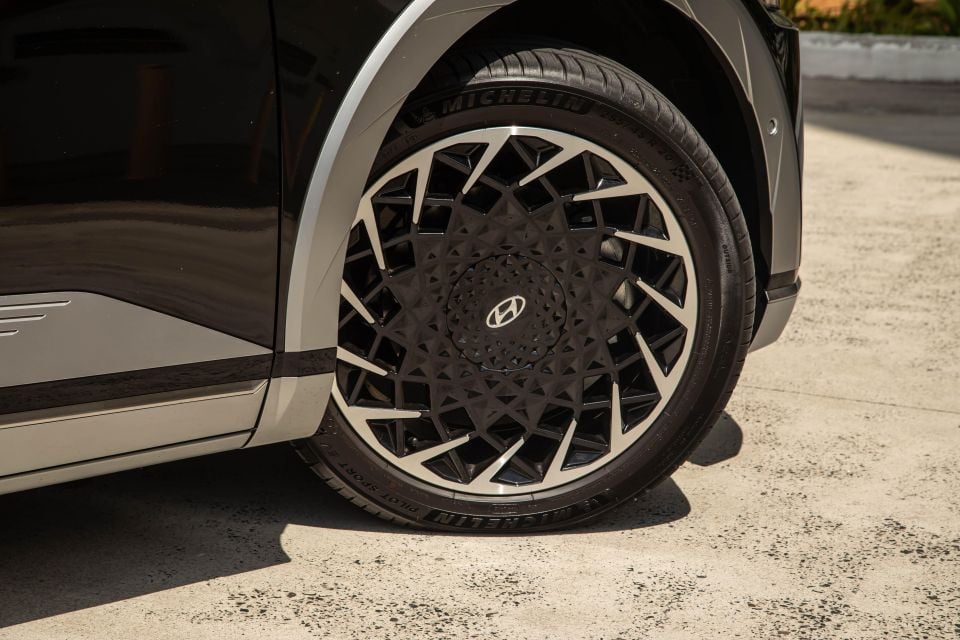

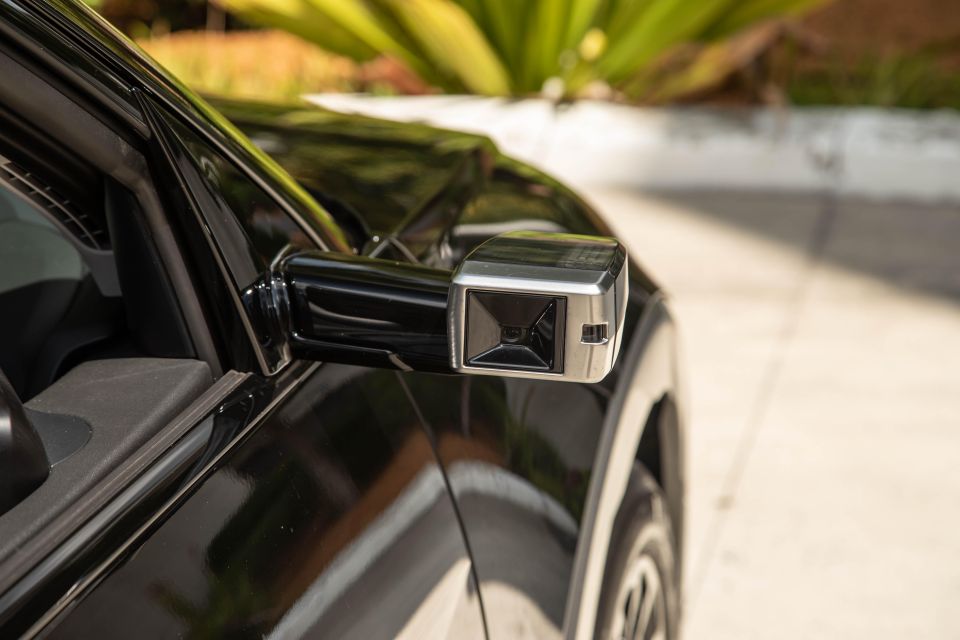
Moving to the Techniq adds:
Finally, the range-topping Epiq has:
Do you think the Epiq makes the most sense? Would you spend the extra for those, er, extras?
For what it’s worth, I’d have serious concerns about those digital mirrors when parking in Sydney. People just don’t give a shit about other people’s cars, and I dread to think what replacing one would cost…
It scored a five-star ANCAP rating in 2021, so the Ioniq 5 has all the right gear.
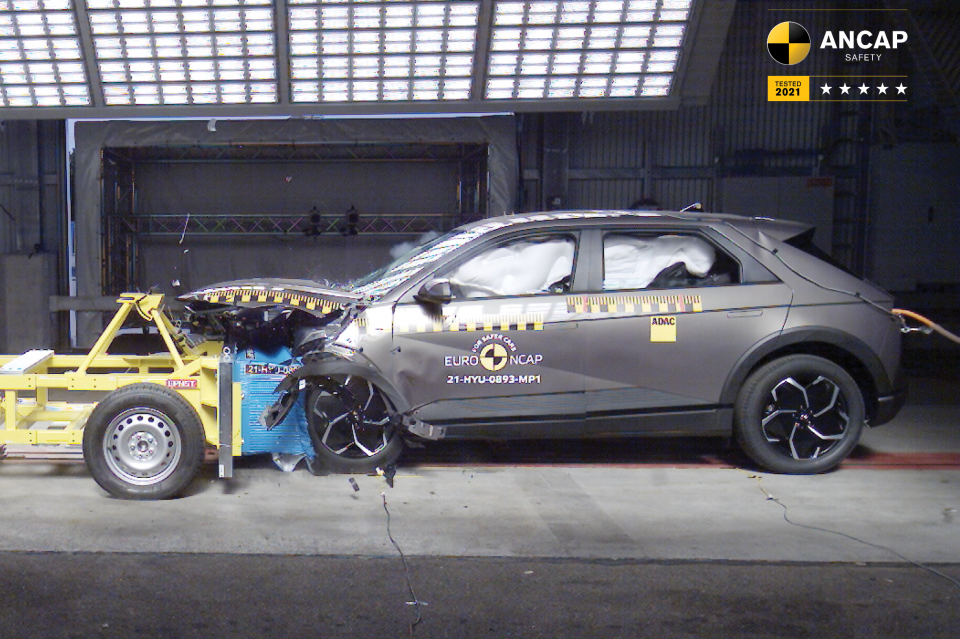
The report card stated an 88 per cent score for adult occupant protection, 87 per cent for child occupant protection, 63 per cent for vulnerable road user protection, and 89 per cent for safety assist.
The standard safety tech across the Ioniq 5 range comprises:
It has seven airbags: dual front, front side, front centre and full-length curtain airbag coverage.
The Hyundai Ioniq 5 has a five-year/unlimited kilometre warranty, just like all other Hyundai models. But it goes a bit further, with an eight-year/unlimited kilometre warranty for the battery pack.
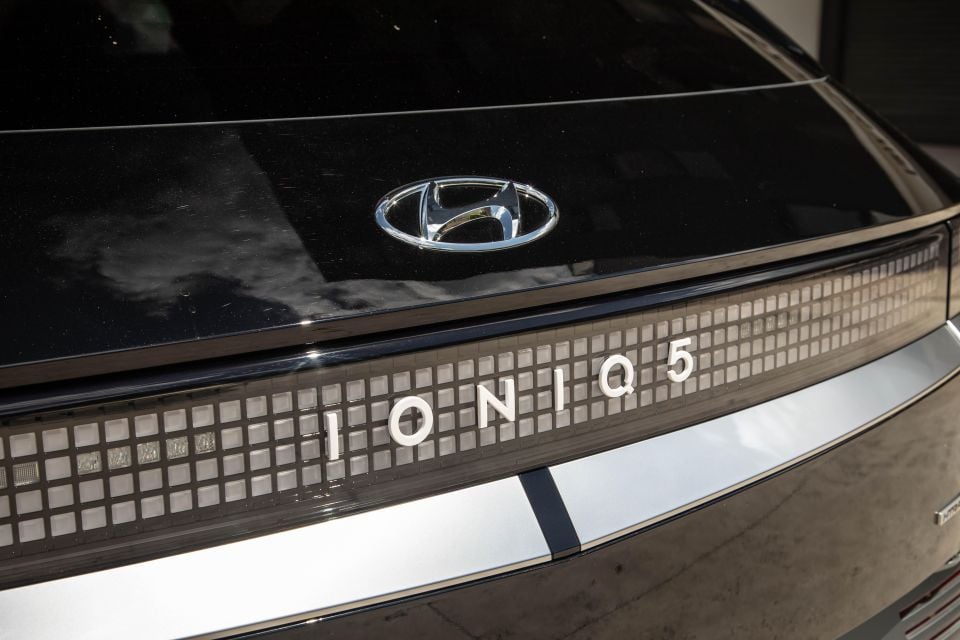
The brand offers capped-price servicing for the Ioniq 5, but they’ve just upped the service intervals so you don’t have to go back as often to the service department. The intervals are every 24 months/30,000km, double what they used to be. The costs for the first three services (or out to 90,000km) are capped at $570, $1090 and $570, respectively.
Hyundai also offers the amazing ownership prospect of eternal roadside assist. That means, if you service your car with the brand, you’ll get lifetime roadside assistance included. Like, forever… or the life of the car.
Now, let’s talk efficiency, as the Ioniq 5 dual-motor AWD models are said to use 19.1kWh of electricity per 100 kilometres. That’s an exceptional claim, considering a Volvo XC40 AWD, for instance, uses something like 25.5kWh/100km.
My returned consumption across a five-day driving stint, which covered almost 400km (so, I didn’t even need to recharge!), was 19.3kWh/100km. Very impressive.
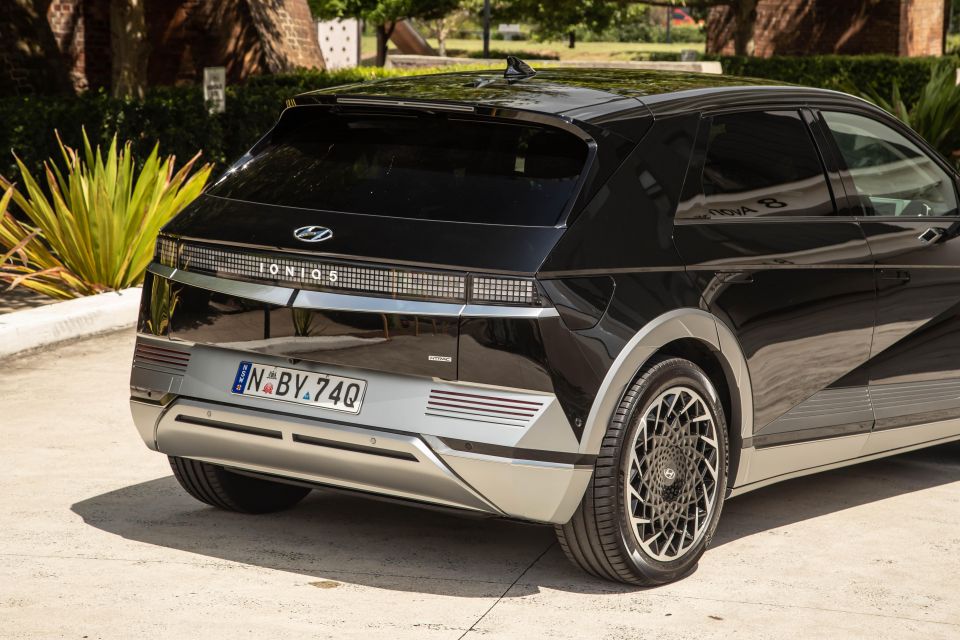
At the NSW average off-peak rate of 20.5 cents per kWh, it would cost about $16 to refill the Ioniq 5 from empty at home.
As mentioned, you’d want a 7kW charge plug at the very least (single phase), but if you plan to be a lifer in EV land, then you might want to consider spending the extra to get a three-phase connection to accommodate a 22kW home charger, as that’ll get the job done considerably quicker. It all adds cost, though.
If you’re curious, the Ioniq 5 RWD base model has a longer range and is more efficient, with a claimed 17.0kWh/100km.
Easy to see why you’d have it instead of an AWD model – unless you really needed that power, torque, all-wheel-drive sure-footedness and the extra gear it adds.
The Hyundai Ioniq 5 Epiq is a terrific electric vehicle for a family, and one that is both brilliant in terms of its interior design but also has a serious amount of street credibility due to its eye-catching appearance.

I’d love one. But I don’t think I’d get the Epiq spec. I don’t think I’d need the extra stuff you get for the money when you choose the Epiq over the Techniq. So, if it were me, the Techniq would be my piq. Sorry. Let us know what you think in the comments!

Click an image to view the full gallery.
Where expert car reviews meet expert car buying – CarExpert gives you trusted advice, personalised service and real savings on your next new car.
Matt has more than a decade of experience in automotive journalism, and loves exploring the pros and cons of new cars, delving into deep-dive industry stories, and going for a drive just for the fun of it.


Damion Smy
23 Hours Ago


CarExpert.com.au
5 Days Ago


Damion Smy
6 Days Ago


Damion Smy
6 Days Ago


Josh Nevett
6 Days Ago


Max Davies
6 Days Ago